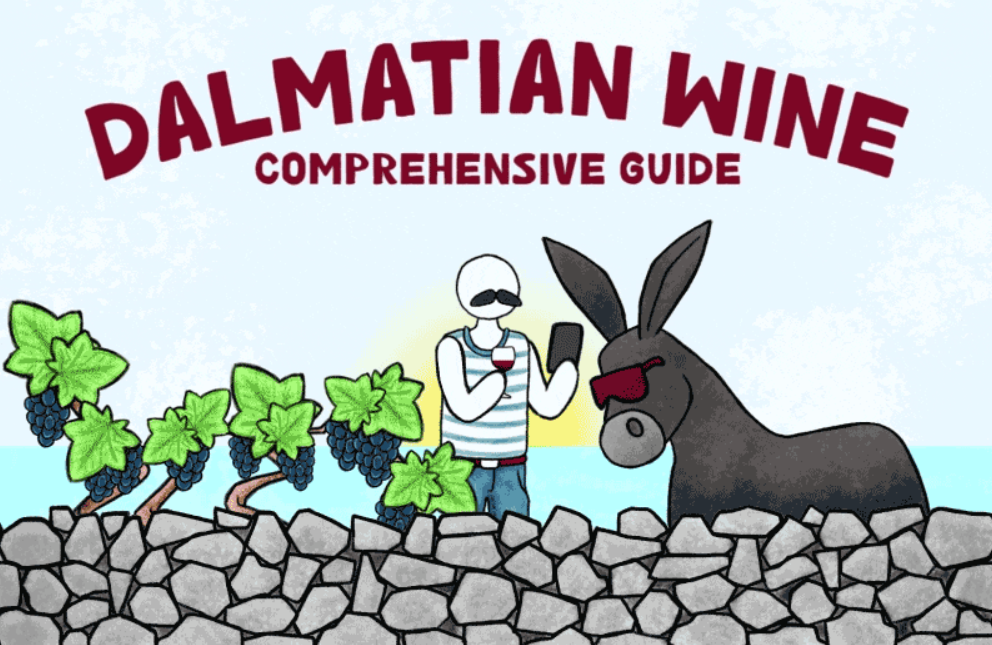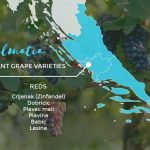December 11, 2023. – As Wine & more writes, Dalmatian wine, with its centuries-old history and distinctive flavours, stands as a testament to Croatia’s wine-making prowess. Originating from the enchanting Dalmatian coast, this wine has earned global acclaim for its unique characteristics, reflecting the region’s diversity and indigenous grape varieties.
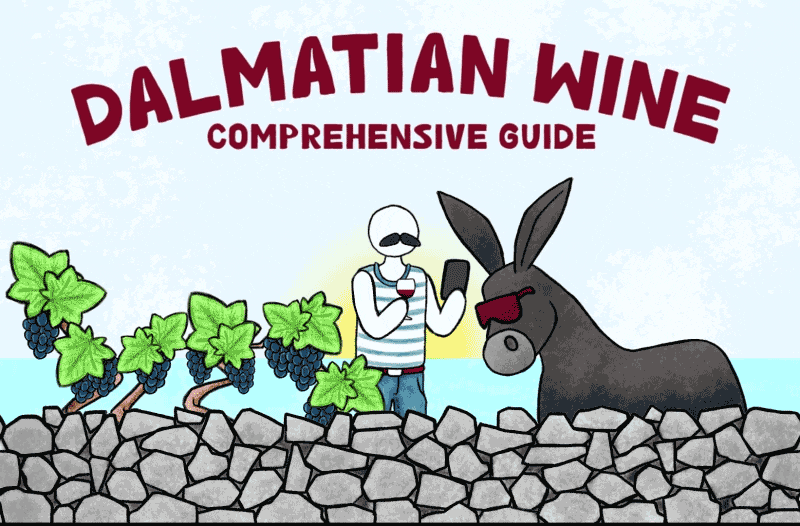
Introduction
Dalmatia is a region in Croatia that boasts of several wine regions. Each of these regions contributes to the diversity of Dalmatian wine. These wine regions span from Zadar in the North to the Konavle region located south of Dubrovnik. Each area has a unique terroir that shapes the grape varieties that thrive there.
The Dalmatian wine region is located along the stunning Dalmatian coast in Croatia. The main cities in the region are Split, Dubrovnik, Šibenik, and Zadar.
Dalmatia is a typical Mediterranean region that has a variety of local and indigenous grape varieties, and has a long tradition of wine production. The first Croatian-protected vineyards, Dingač and Postup, are located on the Dalmatian peninsula Pelješac.
A Journey Through Dalmatia’s WINE History
Viticulture and winemaking have been integral to Dalmatia’s identity, influencing its political, economic, and artistic dimensions.
The decision to cultivate vines was a strategic one, recognizing the economic viability of grape cultivation on limited arable land. Dalmatia’s viticultural roots reach back to ancient times, with evidence suggesting grape cultivation and wine production by the Illyrians over 3,800 years ago.
The arrival of the Greeks and later the Romans further enriched Dalmatia’s viticultural landscape. Even during the Middle Ages, viticulture remained the region’s primary economic activity.
The phylloxera outbreak from 1894 to 1918 marked a challenging period, causing a decline in vineyards and significant emigration. Despite these hurdles, Dalmatia emerged as a region where vines profoundly shaped the lives of its inhabitants.
Dalmatian Wine’s Impact and Importance
Dalmatian wines contribute significantly to global biodiversity, with the region boasting hundreds of autochthonous, indigenous grape varieties, some on the brink of extinction.
The California Zinfandel, a globally renowned grape variety, finds its genetic ancestor in Dalmatia, known as Tribidrag or Crljenak.
While Dalmatian wines may not dominate global markets in terms of quantity, their focus on quality and unique character has garnered admiration, especially from tourists exploring the Dalmatian coast during summer.
Dalmatian Wine Regions
Dalmatia is one of the four wine regions in Croatia and includes everything from Zadar and its hinterland to Konavle in the extreme south of the country. Dalmatia has some of the most extreme Croatian wine-growing locations, which include hard-to-reach and demanding slopes but where the best quality grapes grow.
Dalmatia is divided into three major regions influenced by key cities:
- Northern Dalmatia,
- Central/South Dalmatia, and
- Dalmatian Hinterland.
This division is hardly enough to specify all the intricacies of particular places and unique terroir but provides a general insight into the wonders of Dalmatian wines.
South Dalmatia
The most important sub-regions of South Dalmatia:
- Pelješac peninsula vineyards,
- Korčula island vineyards,
- Konavle vineyards,
- Komarna vineyards,
- Neretva vineyards,
- Lastovo island vineyard.
The climate across the entire region follows the classic Mediterranean pattern, albeit notably wetter and slightly cooler compared to the islands of central Dalmatia. This contrast significantly influences the wine style in this area, even when dealing with the same grape varieties like Plavac mali or Maraština.
Typical representatives of red varieties:
- Plavac Mali,
- Tribidrag (Crljenak),
- Plavina.
Typical representatives of white varieties
- Pošip,
- Rukatac (Maraština),
- Dubrovačka Malvasija,
- Grk.
Central Dalmatia
The most important sub-regions of Central Dalmatia:
- Brač island vineyards,
- Vis island vineyards,
- Hvar island vineyards,
- Kaštela-Trogir vineyards,
- Omiš-Makarska vineyards,
- Šolta island vineyards.
The climate in the region is typically Mediterranean, characterised by minimal rainfall and particularly hot, dry summers. The soil comprises various clay and brownish coastal soils, predominantly on limestone rocks. However, more crucial than the overall conditions of the region are the specific attributes of the best locations, such as Ivan Dolac and Sveta Nedjelja on the island of Hvar, Murvica and Stipančić on the island of Brač, among others.
All the exceptional wine-growing locations in Dalmatia share a common soil type. Typically, a thin layer of fertile soil rests upon limestone rocks. While sufficient for vine survival, this setup limits yields, concentrating quality naturally without human intervention, resulting in small berries and modest yields.
Typical representatives of red varieties:
- Plavac Mali,
- Tribidrag (Crljenak).
Typical representatives of white varieties
- Pošip,
- Rukatac (Maraština),
- Vugava.
North Dalmatia
The most important sub-regions of North Dalmatia:
- Primošten vineyards,
- Pirovac-Skradin vineyards,
- Promina vineyards,
- Šibenik vineyards,
- Drniš vineyards,
- Zadar-Biograd vineyards,
- Benkovac-Stankovci vineyards.
Northern Dalmatia encompasses a diverse geographical expanse with varying climatic conditions.
What sets this region apart is the remarkable balance of acids in all its wines, contrary to the conventional expectations of Dalmatian wines. The area experiences abundant radiant heat, strong winds, and a more noticeable continental influence marked by cool nights and diurnal temperature fluctuations.
Typical representatives of red varieties:
- Plavina,
- Babić.
Typical representatives of white varieties
- Debit,
- Maraština.
Dalmatian Hinterland
The most important sub-regions of Dalmatian Hinterland:
- Imotski vineyards,
- Vrgorac vineyards,
- Sinj-Vrlika vineyards.
The Dalmatian Hinterland, with sub-regions like Imotski and Vrgorac, is a haven for indigenous and foreign grape varieties.
Bordeaux varieties flourish alongside local gems like Kujundžuša and Žilavka. The conditions for vine cultivation mirror those in the rest of Dalmatia. Limestone rocks form the primary substrate, often accompanied by various types of clay and other soils.
The climate is distinctive, exhibiting a dry Mediterranean character in the summer with hot days, often surpassing coastal temperatures. In contrast, other seasons, particularly autumn and winter, lean more towards a continental climate, featuring spring frosts, creating a stylistically significant difference in the wines compared to coastal areas.
Typical representatives of red varieties:
- Trnjak,
- Vranac,
- Plavina.
Typical representatives of white varieties
- Kujundžuša,
- Zlatarica,
- Žilavka,
- Medna.
Notable Dalmatian GRAPE VARIETIES
In contrast to other Croatian wine regions, Dalmatia stands out with a prevalence of red grape varieties that flourish on challenging and hard-to-reach terrain. Plavac Mali, among the red varieties, and Pošip, among the white varieties, serve as the backbone of Dalmatian winemaking.
However, what captivates the attention of many enthusiasts is the extensive array of indigenous varieties. Dalmatian winemakers increasingly recognise the potential of these indigenous varieties.
Plavac Mali – The Bold Red Wine Grape
Considered the Croatian red wine king, Plavac Mali thrives in the challenging terrain of central and southern Dalmatia. With distinctive aromas and a complex flavor profile, it has shaped Dalmatian winemaking preferences for generations.
The ripest Plavac Mali grapes flourish in Dingač, Postup, Trstenik, Mili on the Pelješac peninsula, Ivan Dolac, Sveta Nedjelja on Hvar, and Murvica and Stipančić on Brač. However, emerging locations like Komarna, the islands of Vis and Korčula, and the northern Dalmatian site of Jadrtovac are gaining recognition for providing an ideal climate for Plavac Mali, especially for a balanced expression that avoids overripeness.
Tribidrag – The Original Zinfandel
Originally identified as Tribidrag or Crljenak, Zinfandel shares a compelling story deeply intertwined with its Croatian roots. Scientific collaboration has unveiled its ancestral connection to the Croatian indigenous variety Tribidrag.
In fact, it’s genetically the same variety. This variety has found a second home in California, particularly in regions like Napa and Sonoma, where it has gained fame for producing bold and fruit-forward red wines. The wine offers a spectrum of flavors, from dark berries to peppery spice, reflecting its adaptability to different terroirs.
Babić – Resilience Redefined
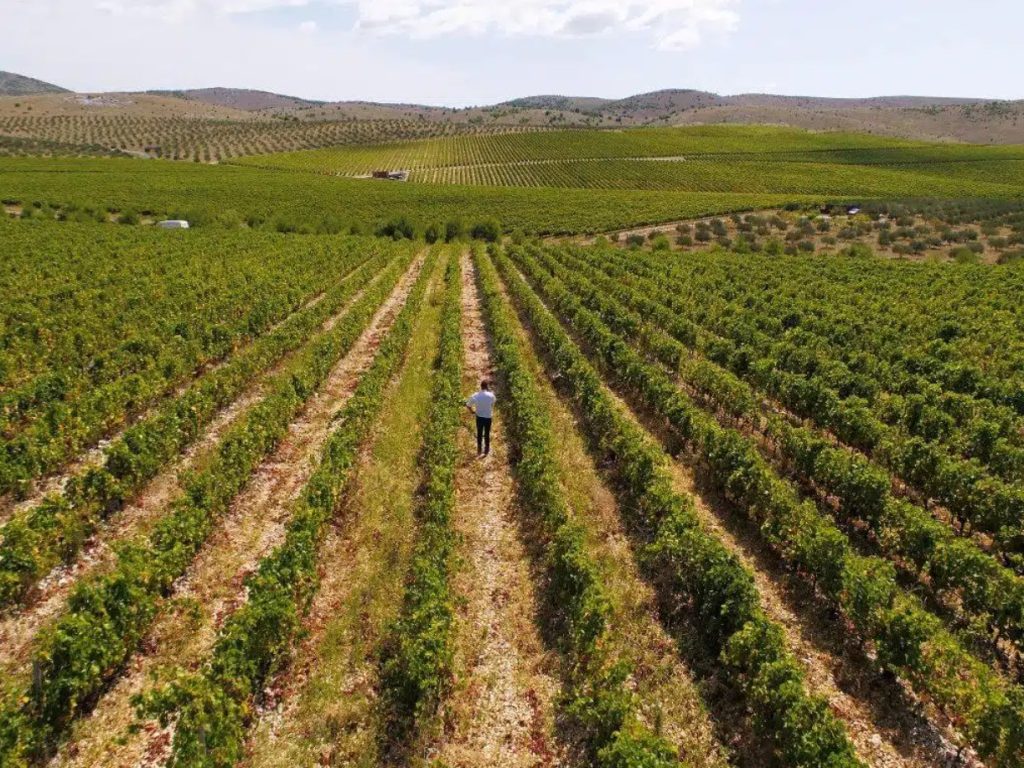
Babić grapes display a range in bunch sizes, with wines from smaller clusters often containing more sugar, resulting in higher alcohol content and a fuller-bodied profile. Characterized by medium-sized round berries, Babić is a dark blue grape with thin, soft skin and juicy flesh.
This characteristic contributes to vibrant and lively wines with aromatic notes of red fruits and subtle earthy undertones.
Babić thrives under ample sunlight for ripening and flourishes in extremely unfavourable and nutrient-poor soil. The historically acclaimed Bucavac remains the most famous location for growing Babić. However, impressive results are also achieved in other positions, such as Jadrtovac near Šibenik.
Plavina – Striking Mediterranean Harmony
Once prevalent in Dalmatia, Plavina stands out for its fresh character, mild tannins, and medium-strong alcohols. Often used in blends, it complements heavier red wines, contributing to overall harmony. Plavina’s unique combination of characteristics makes it exceptionally soft and highly drinkable.
Thanks to its specific characteristics, Plavina frequently finds its place in blends, acting as a perfect balancing element for heavier Dalmatian red wines. Its inherent softness and freshness contribute to the overall harmony of these blends.
Pošip – A Unique White Wine Variety
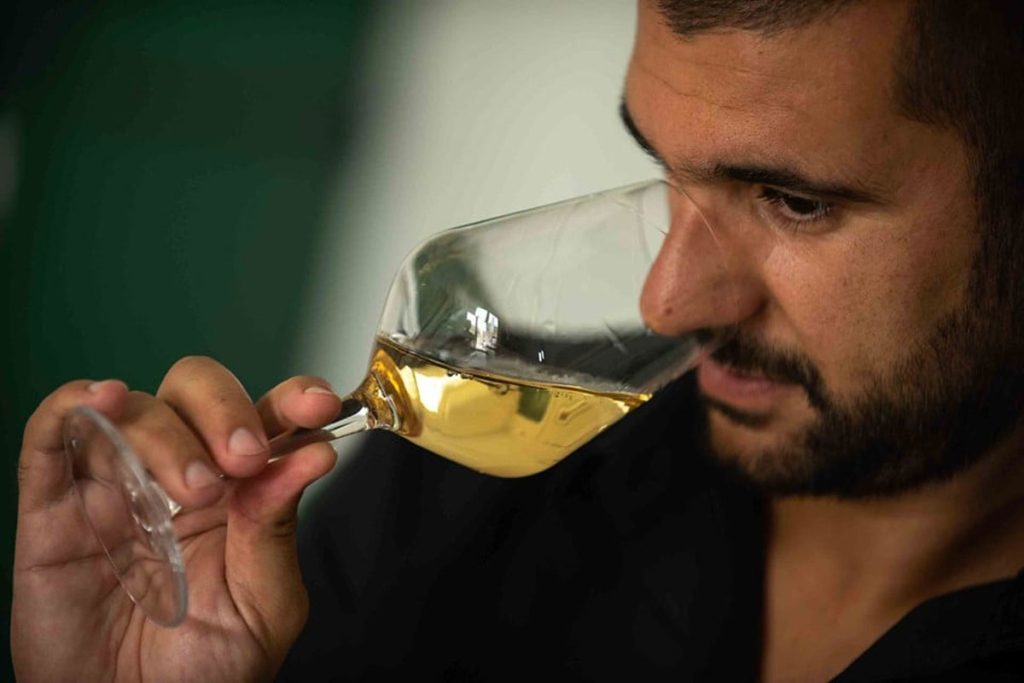
Cultivated for centuries by local families of wine producers in the vineyards of Smokvica and Čara on the picturesque island of Korčula in Croatia, Pošip has evolved into the first Croatian white wine with protected geographical origin—a true “from zero to hero” narrative.
Pošip wines range from fresh to aged and macerated ones, offering notes of dried apricots, figs, and medicinal herbs. While Pošip is now cultivated throughout Dalmatia, yielding extraordinary results in various locations, its most esteemed terroirs remain rooted in two specific areas on Korčula island —Čara and Smokvica.
Maraština – Dalmatia’s True Tradition
In the past, Maraština was the most widespread white variety in Dalmatia, which is the title Pošip holds today. Experts have proven that it is actually a variety of Malvasia lunga or Malvasia del Chianti, but it has been present in Dalmatia before official records, so it is definitely an authentic expression of white Dalmatia.
Today, winemakers try to get various styles of wine from Maraština, so white wines and amber wines are produced from their grapes as a kind of reinterpretation of tradition. Maraština grapes are sweet when ripe, and their berries have a tougher skin, so winemakers often leave them to dry in the wind to make aromatic sweet Prošek.
Along with stone fruits, citrus fruits, and Mediterranean herbs, the best Maraština wines express salinity in the finish as a mineral signature of their origin.
Although widespread across Dalmatia, the finest examples of Maraština are in Northern Dalmatia, with a couple of notable exceptions.
Debit – A Refreshing Twist on an Old Classic
Wines crafted from the Debit grape are characterized by a harmonious and easily drinkable profile, making it a versatile variety suitable for producing sparkling wines as well.
Predominantly used for crafting dry wines with heightened freshness, lightness, and a delicate effervescence, Debit also demonstrates significant potential in the realm of dessert wines.
While Debit is one of the most prevalent grape varieties in Dalmatia, its prominence is particularly notable in the locations of Northern Dalmatia, where it takes the lead.
Historically, Debit thrived in the skeletal, well-drained soils of karst plains and mountain slopes, specifically in areas like Promina. More recently, cultivation has expanded to include karst fields.
Thanks to modern winemaking, Debit is one of the key Dalmatian players as it achieves a unique profile in the refreshing white wine category.
Conclusion
Dalmatian wine, with its diverse grape varieties, unique terroir, and centuries-old traditions, continues to captivate wine enthusiasts worldwide.
As consumers increasingly seek authenticity and a sense of place in their wine choices, Dalmatian wines offer a compelling narrative rooted in history, culture, and the stunning landscapes of the Adriatic coast. Whether it’s the robust reds of Dingač, the elegant whites of Brač, or the hidden gems of the Hinterland, Dalmatia stands as a vibrant and essential player in the global world of wine.
NOTE: The article originally written by wineandmore.com

